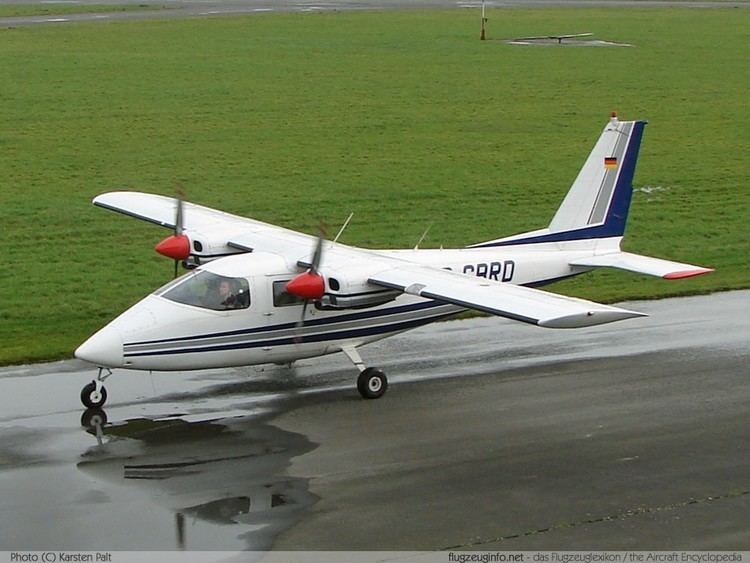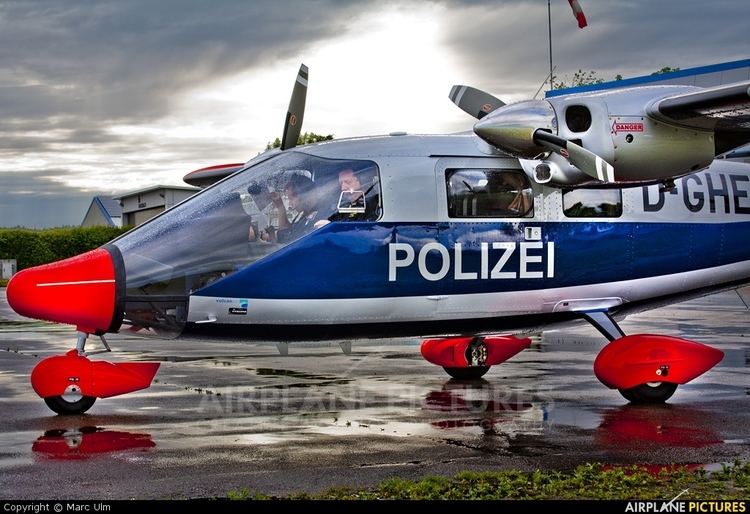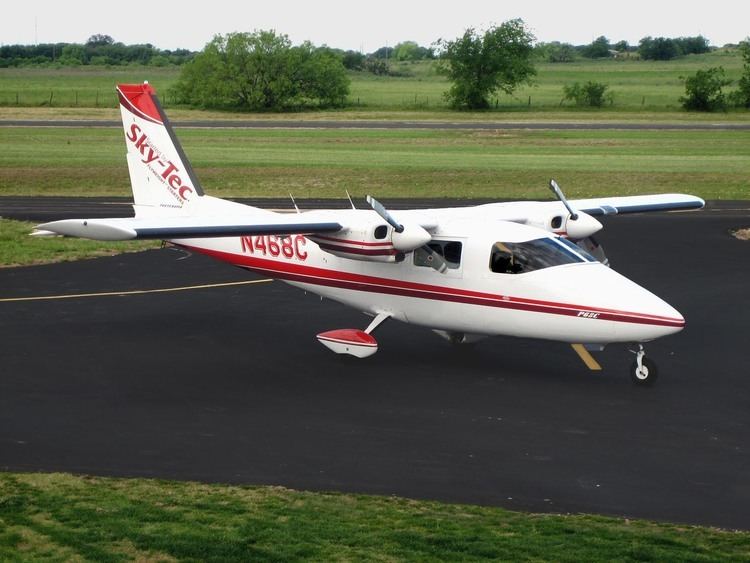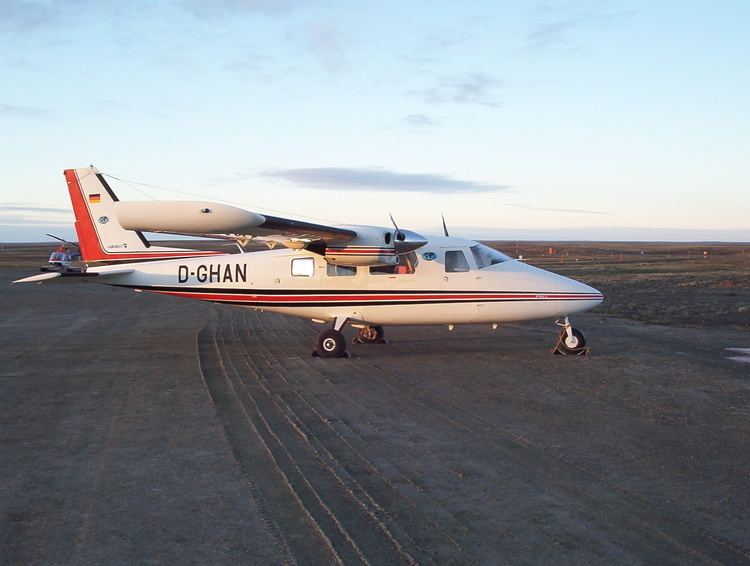Top speed 320 km/h Length 9.55 m Engine type Lycoming O-360 | Wingspan 12 m Unit cost 972,000–972,000 USD First flight 1970 | |
 | ||
Partenavia p 68 b victor hagelflieger storm chasers airplane to vaccinate cloud
The Partenavia P.68, now Vulcanair P68, is an Italian six-seat, twin-engined, high-wing monoplane built by Partenavia and later Vulcanair. Designed by Professor Luigi Pascale and originally put into production in 1972, it was intended for private or business use but has also seen use as both a training and a transport aircraft. It was originally named the Victor, although this name was not used for the production aircraft. The P.68 Observer, which was an Italian/German development, has a transparent nose for use in police work and observation duties.
Contents
- Partenavia p 68 b victor hagelflieger storm chasers airplane to vaccinate cloud
- G pgbr vulcanair partenavia p 68 observer 2 blackpool airport
- History
- Spartacus
- Observer
- Variants
- Military and government operators
- Civil operators
- Incidents and accidents
- Specifications P68C
- References

G pgbr vulcanair partenavia p 68 observer 2 blackpool airport
History

First flown on 25 May 1970, the prototype P.68 was built at Arzano, Italy. It was powered by two 200 hp (149 kW) Lycoming IO-360 piston engines. Production of the P.68 began in 1972 with 14 pre-production aircraft at new facilities in Casoria, Italy. These were followed in 1974 by the P.68B with the fuselage lengthened by 6in (15.2 cm) to create more space in the cockpit. It was superseded in 1979 by the P.68C which had a lengthened nose to accommodate a weather radar. A turbocharged version (the P.68C-TC) was available in 1980. The type license was obtained by Vulcanair, which is still producing the P.68C.
Spartacus

With the help of Aeritalia, development began of a nine-seat turboprop version. The first aircraft, an AP.68TP, first flew in 1978 using Allison 250 turboprops. Although the prototype had a retractable undercarriage, the production aircraft, named the Spartacus, had a fixed undercarriage. Later, a retractable undercarriage version was built as the Viator.
Observer

The German company Sportavia-Putzer modified the P.68 by replacing the nose section with a transparent structure, marketing it as an observation aircraft for law enforcement. Initially, Observers were simply conversions of existing aircraft, but later, they were entirely new aircraft built by Partenavia.
Variants

Military and government operators
Civil operators
The ICAO designator for all versions with piston engine as used in flight plans is P68, for the versions with turboprops up to the AP.68TP-300 it is P68T, and for the AP.68TP-600 versions it is VTOR.
Incidents and accidents
On July 10, 1978, a P68B registered VH-PNW crashed shortly after take-off from Essendon Airport. Six people on the ground were killed, and one person injured. Three people on the aircraft were seriously injured.
On September 11, 1983, a sales representative was flying a P.68C at an airshow in Plainview, Texas, performing high-speed, high-G maneuvers in excess of the aircraft’s design parameters and, during one such maneuver, the wings separated from the rest of the aircraft just outboard of the engine nacelles. The fuselage also twisted longitudinally just before the empennage. The pilot was killed on impact with terrain.
On March 2, 2013, a P.68 Observer registered OY-CAG from BioFlight crashed during landing in Roskilde Airport. The two persons on board were killed.
On 21 May 2015 a Partenavia AP68TP landed at Lanseria Airport in South Africa without the nose wheel extended, in what was described as a "perfect emergency landing".
Specifications (P.68C)
Data from Jane's All The World's Aircraft 1982-83
General characteristics
Performance
